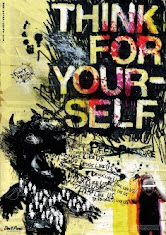

U.S. Releases Secret List of Nuclear Sites Accidentally
By WILLIAM J. BROAD
Published: June 2, 2009 in
THE NEW YORK TIMESThe federal government mistakenly made public a 266-page report, its pages marked “highly confidential,” that gives detailed information about hundreds of the nation’s civilian nuclear sites and programs, including maps showing the precise locations of stockpiles of fuel for nuclear weapons.
The publication of the document was revealed Monday in an online newsletter devoted to issues of federal secrecy. That publicity set off a debate among nuclear experts about what dangers, if any, the disclosures posed. It also prompted a flurry of investigations in Washington into why the document had been made public.
On Tuesday evening, after inquiries from The New York Times, the document was withdrawn from a Government Printing Office Web site.
Several nuclear experts argued that any dangers from the disclosure were minimal, given that the general outlines of the most sensitive information were already known publicly.
“These screw-ups happen,” said John M. Deutch, a former Director of Central Intelligence and deputy secretary of defense who is now at the Massachusetts Institute of Technology. “It’s going further than I would have gone but doesn’t look like a serious breach.”
But David Albright, president of the Institute for Science and International Security, a private group in Washington that tracks nuclear proliferation, said information that shows where nuclear fuels are stored “can provide thieves or terrorists inside information that can help them seize the material, which is why that kind of data is not given out.”
The information, considered sensitive but not classified, was assembled for transmission later this year to the International Atomic Energy Agency as part of a process by which the United States is opening itself up to stricter inspections in hopes that foreign countries, especially Iran and other states believed to be clandestinely developing nuclear arms, will do likewise.
President Obama sent the document to Congress on May 5 for Congressional review and possible revision, and the Government Printing Office subsequently posted the draft declaration on its Web site.
As of Tuesday evening, the reasons for that action remained a mystery. On its cover, the document attributes its publication to the House Committee on Foreign Affairs. But Lynne Weil, the committee spokeswoman, said the committee “neither published it nor had control over its publication.”
Gary Somerset, a spokesman for the printing office, said it had “produced” the document “under normal operating procedures” but had now removed it from its Web site pending further review.
The document contains no military information about the nation’s stockpile of nuclear arms, or about the facilities and programs that guard such weapons. Rather, it presents what appears to be an exhaustive listing of the sites that comprise the nation’s civilian nuclear complex, which stretches coast to coast and includes nuclear reactors and highly sensitive sites at weapon laboratories.
Steven Aftergood, a security expert at the Federation of American Scientists in Washington, revealed the existence of the document Monday in “Secrecy News,” an electronic newsletter he publishes on the Web.
Mr. Aftergood expressed bafflement at its disclosure, calling it “a one-stop shop for information on U.S. nuclear programs.”
In his letter of transmittal to Congress, Mr. Obama characterized the information as “sensitive but unclassified” and said that all the information that the United States gathered to comply with the advanced protocol “shall be exempt from disclosure” under the Freedom of Information Act.
The report details the locations of hundreds of nuclear sites and activities. Each page is marked across the top “Highly Confidential Safeguards Sensitive” in capital letters, with the exception of pages that detailed additional information like site maps. In his transmittal letter, Mr. Obama said the cautionary language was a classification category of the International Atomic Energy Agency’s inspectors.
The agency, in Vienna, is a unit of the United Nations whose mandate is to enforce a global treaty that tries to keep civilian nuclear programs from engaging in secret military work.
In recent years, it has sought to gain wide adherence to a set of strict inspection rules, known formally as the additional protocol. The rules give the agency powerful new rights to poke its nose beyond known nuclear sites into factories, storage areas, laboratories and anywhere else that a nation might be preparing to flex its nuclear muscle. The United States signed the agreement in 1998 but only recently moved forward with carrying it out.
The report lists many particulars about nuclear programs and facilities at the nation’s three nuclear weapons laboratories — Los Alamos, Livermore and Sandia — as well as dozens of other federal and private nuclear sites.
One of the most serious disclosures appears to center on the Oak Ridge National Laboratory in Tennessee, which houses the Y-12 National Security Complex, a sprawling site ringed by barbed wire and armed guards. It calls itself the nation’s “Fort Knox” for highly enriched uranium, a main fuel of nuclear arms.
The report lists “Tube Vault 16, East Storage Array,” as a prospective site for nuclear inspection. It said the site, in Building 9720-5, contains highly enriched uranium for “long-term storage.”
An attached map shows the exact location of Tube Vault 16 along a hallway and its orientation in relation to geographic north, although not its location in the Y-12 complex.
Tube vaults are typically cylinders embedded in concrete that prevent the accidental formation of critical masses of highly enriched uranium that could undergo bursts of nuclear fission, known as a criticality incident. According to federal reports, a typical tube vault can hold up to 44 tons of highly enriched uranium in 200 tubes. Motion detectors and television cameras typically monitor each vault.
Thomas B. Cochran, a senior scientist in the nuclear program of the Natural Resources Defense Council, a private group in Washington that tracks atomic arsenals, called the document harmless. “It’s a better listing than anything I’ve seen” of the nation’s civilian nuclear complex, Mr. Cochran said. “But it’s no national-security breach. It confirms what’s already out there and adds a bit more information.”









